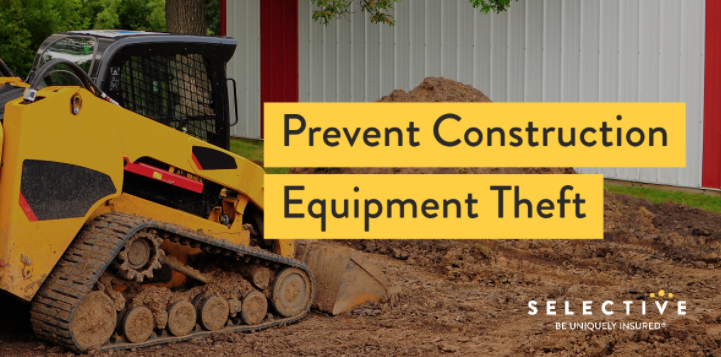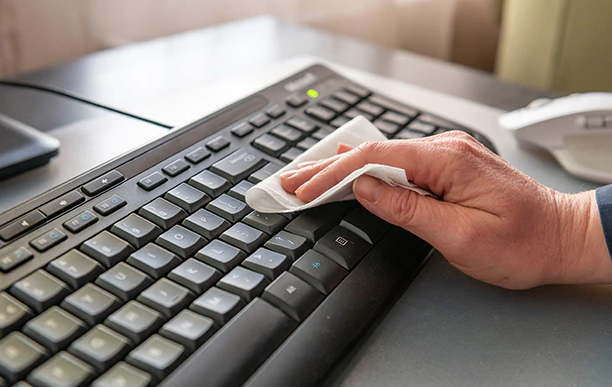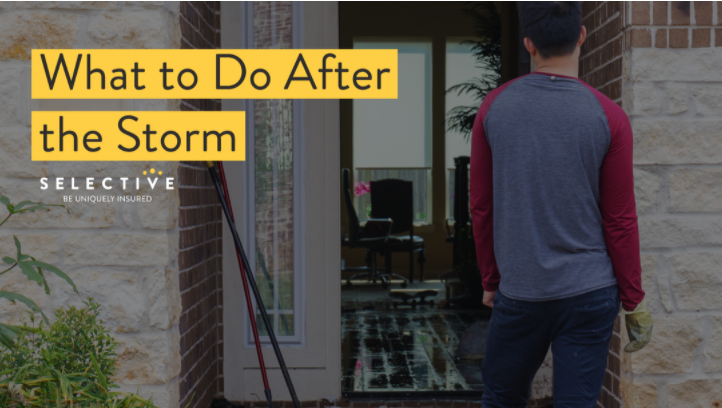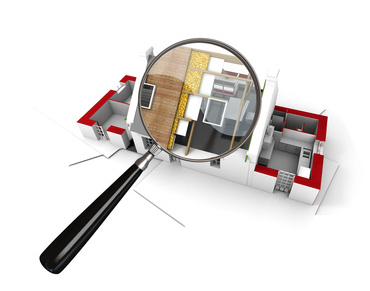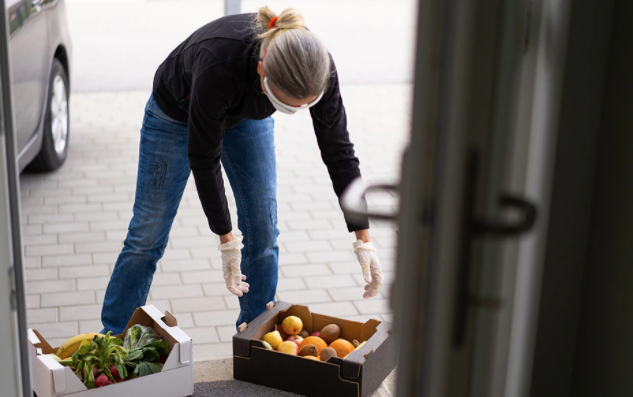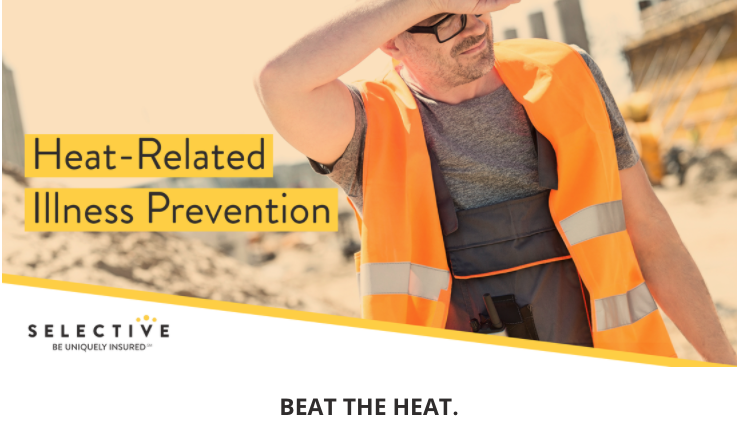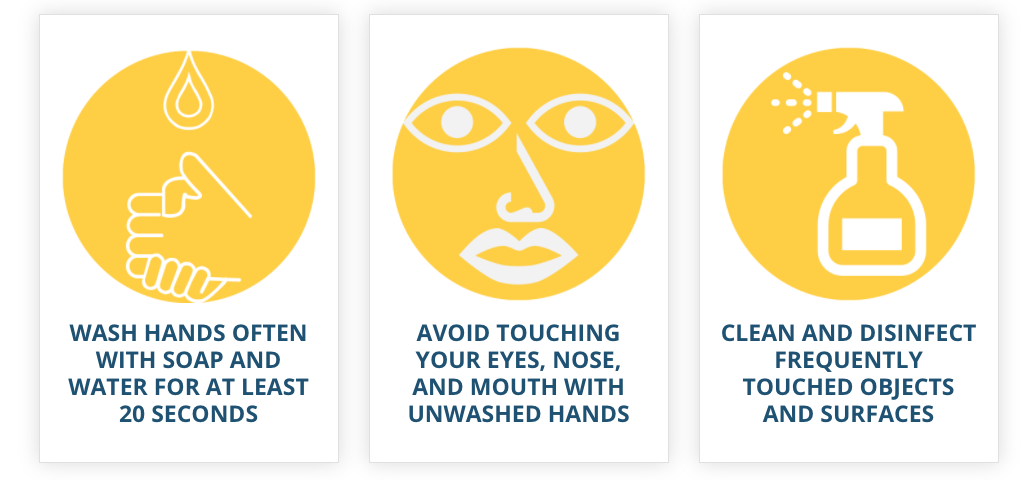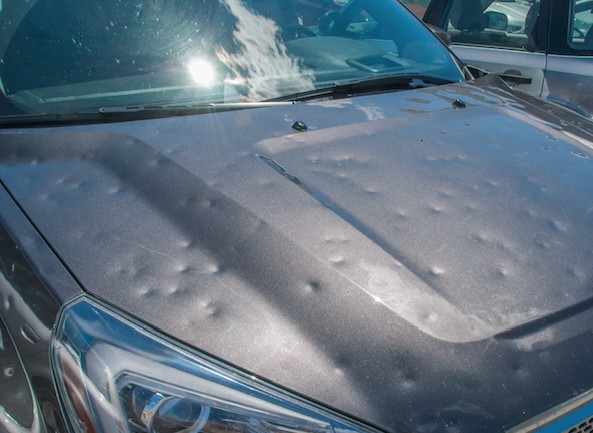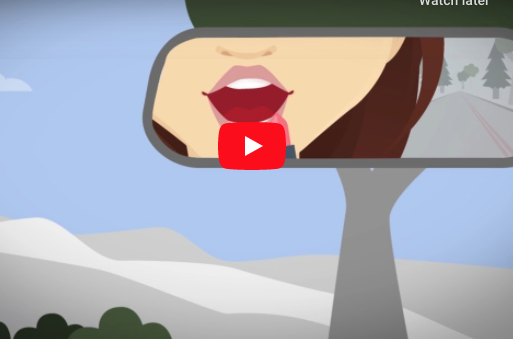Yard Safety

Backyard entertaining has gotten more elaborate in recent years. Fire pits are helping homeowners extend the backyard season, and today’s playsets involve more than a simple set of swings and a slide. Whether backyard entertaining means spending time by the swimming pool or gathered around the grill, here are some safety tips to help keep your oasis fun and free of danger.
Garden Water Features
Fish ponds, waterfalls and other water features can add a note of serenity to the backyard. They are also particularly attractive to young children, and can be a drowning hazard if proper protective steps are not put in place:
- Children may drown in as little as an inch or two of water. An adult should watch children at all times when in or near water.
- Use a rigid, lockable cover or fence in all four sides as you would for a swimming pool.
- Tightly cover water treatment or chemical mixtures after use.
Trampolines
Trampolines can be fun for kids, but according to the U.S. Consumer Product Safety Commission, they are the cause of nearly 100,000 injuries each year. Avoid being a statistic:
- Limit the number of jumpers to one at a time.
- Supervision is needed for children at all times.
- Remove trampoline ladders after use to prevent unsupervised access by young children.
- Trampoline enclosures can help prevent injuries from falls from trampolines.
- Anchor the trampoline and enclosure to the ground by using a trampoline anchor kit. Read More
Tree Maintenance and Care
The trees in your yard can enhance your property, provide shade and offer abundant environmental benefits. However, trees can also pose a safety hazard to your family and your home if they are not properly inspected and maintained.
Trees can present a particularly significant danger during a storm. Wind, lightning, snow and ice can all transform a tranquil row of trees into an imminent threat to your property. Proper tree maintenance involves more than pruning and trimming overgrown branches. These are some of the key steps you can take to protect your trees and prevent them from becoming a safety hazard.
Steps to Take Before a Storm
- Remove any dead trees on your property.
- Enhance the health of trees through timely watering, proper fertilization and protection from soil compaction. Healthy trees will be able to better adapt to changes in the environment, remain firm in the wind and react more effectively to damage.
- Regularly prune dead or broken limbs to help trees maintain their structural integrity. In addition, thin excess branches every three to five years. For more information, visit arborday.org.
- Remove or treat pest problems as soon as you spot them to minimize potential damage to trees. Be careful not to over-treat tree hollows, and do not remove decayed wood from hollows unless it falls away in your hands. Cleaning hollows can cause additional internal damage to trees. If possible, cover the opening to hollows. Read More
Summer Home Maintenance Tips

For many, there is no better time of the year than summertime to be outside in the yard enjoying the weather and sunshine. Warm temperatures and longer days make the perfect backdrop for picnicking, barbecuing or just enjoying drinks and snacks on the deck or patio.
Your home in the summer should be a source of enjoyment, both inside and outside. The harsh winter, however, can leave its mark, which can temper or even ruin your summer enjoyment if you do not prepare. A bit of time spent on seasonal maintenance can keep your home in top shape for the warmest season.
Start of the Season
Preparing your home for the warmer months should produce a sense of enjoyment, not dread at what might be damaged, broken or need replacing. If you do find any damage, make any necessary repairs right away to mitigate further damage and help keep you and your family safe.
Be sure to check both inside and outside the home for damage or wear and tear, as well as evidence of any unwanted guests such as wildlife or rodents. Also, walk the property to make sure everything is where it should be, and do a long-range as well as close visual inspection of the house.
Inside the House
It is good practice to check the locks on your doors each season to make sure they are secure. Do this by opening the doors and make sure they close and latch properly. Inside the home, check all window locks to ensure they all function correctly. Check window and door screens for any holes.
Check electrical outlets and cords for potential fire hazards, such as frayed wires or loose-fitting plugs. To avoid a potential fire, be sure not to overload electrical outlets, fuse boxes, extension cords or any other power service. Read more
How to Help Prevent Heat Stroke

Did you know that extreme heat has killed more people in recent years than all other natural disasters combined?1 Between 1999 and 2009, there were an average of 658 heat-related deaths per year in the United States.2 While warmer weather means more outdoor activities for many, knowing how to prevent overheating and how to identify warning signs from heat injury can be the difference between a fun and healthy summer, and something much more serious.
Know the Warning Signs
Heat exhaustion and heat stroke are the most common problems when the body is exposed to excessive temperatures.3 Heat exhaustion occurs when the body overheats from prolonged exposure to high temperatures.
Symptoms of heat exhaustion can include, but are not limited to:
- Dizziness;
- Weakness;
- Headaches;
- Blurred vision;
- Nausea;
- Staggering;
- Paleness;
- Profuse sweating;
- Weak pulse;
- Faint breathing.
Reducing the Chance of Heat Stroke
Heat exhaustion can be life-threatening if not treated right away, as it can quickly lead to heatstroke. If you or someone you know is exhibiting signs of heat exhaustion, here are a few tips to reduce the chance of heatstroke:
- Go to a shady location or a room with air conditioning.
- Lie down and stay calm.
- Take frequent small sips of cool water or a sports drink.
- Call the doctor if symptoms of heat exhaustion persist. Read More
Types of Fire Extinguishers

Portable fire extinguishers can save lives and property when a small, contained fire breaks out in your home or business. But different types of fire extinguishers fight different types of fire – and using the wrong one may make the fire worse. Would you know which to use? The following information can help you be better prepared in case of a fire.
Use the Right Fire Extinguisher for the Fire
There are five classes of fire that could break out, each involving a different material. Determine what type of fire extinguisher you own ahead of time by looking for the symbol on the label and matching it to one of the descriptions below. Many homes and businesses use multipurpose fire extinguishers that are good for three classes of fires – A, B and C. If you already own a fire extinguisher, check the label to see what class of fire it is good for. Be on the lookout for these standard symbols. If you see a red slash through a picture, it means that the extinguisher should not be used on that class of fire. Read More
How to Use a Fire Extinguisher [Video]
You should know exactly how to use a fire extinguisher in the event a fire develops and you feel you are safely able to fight it. Before you are faced with the need to use one, be sure you have the right type of fire extinguisher on hand. It is recommended that only those trained in the proper use of fire extinguishers consider using them when appropriate.
Call for help before attempting to extinguish a fire. A fire may grow out of control more quickly than you anticipate. It is wise to have help on the way.
Determine a safe evacuation path before approaching the fire. Do not allow the fire, heat or smoke to come between you and your evacuation path.
Attack the Fire Using the PASS Method:
Pull the pin – by pulling the pin, the operating lever should unlock and allow you to discharge the extinguisher.
Aim low – point the extinguisher hose/nozzle at the base of the fire.
Squeeze the lever – this should discharge the extinguishing agent. Some extinguishers may have a button or other means of activation.
Sweep from side to side – while you are aiming at the base of the fire, you should sweep back and forth until the fire is extinguished. If the fire re-ignites, repeat the process. Read More
Cooking Fire Safety
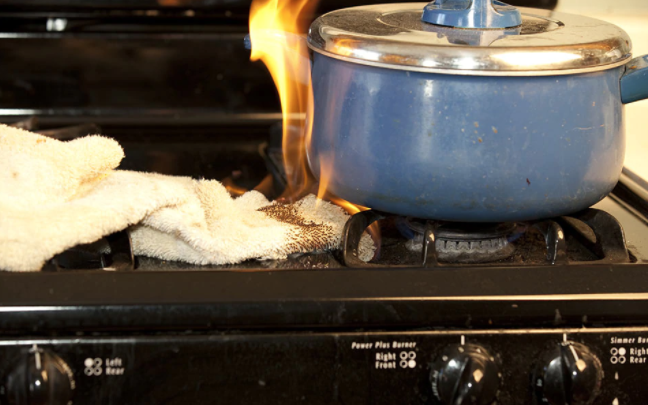
By Nacia Lipton
Cooking is a common cause of home structure fires and home fire-related injuries. Whether preparing for a family dinner or making a quick snack, practicing safe cooking behaviors can help keep you and your family safe.
- Never leave your range or cooktop unattended while cooking. If you have to leave the room, turn your range or cooktop off.
- Wear short, close-fitting or tightly rolled sleeves. Loose clothing can hang down onto hot surfaces and can catch fire if it comes in contact with a gas flame or electric burner.
- Keep your cooking area clean and free of combustible materials. Food wrappers, oven mitts or other materials left on or near the stove may catch fire.
- Be sure to clean up any spilled or splattered grease. Built-up grease can catch fire in the oven or on the cooktop.
- Keep a fire extinguisher readily available. Having an extinguisher nearby is important, but you also need to have the correct type of extinguisher and know how to properly use it.
- Never throw hot grease in the garbage as it can ignite combustible materials. Be sure to let grease cool and consider disposing of it in an old can, such as a metal coffee can.
- Do not store food or other items in your oven. It can be easy to forget there is an item in your oven, and this could catch fire while preheating.
The Science of Gas Grill Fires
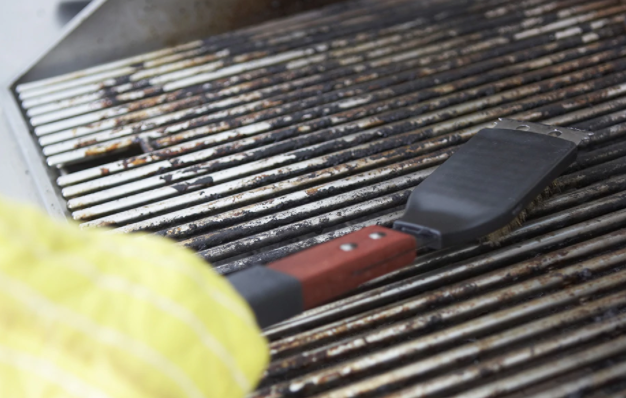
At laid-back barbecues and neighborhood gatherings across the country, the grill has become a popular fixture. While grills may be a convenient way to cook, they still require regular maintenance. Nearly 9,000 fires a year, on average, involve grilling.
Five out of six of these reported fires involved gas-fueled grills.1 So what causes a gas grill to catch on fire? We’ll take a look at three of the leading causes, and explore the science behind gas grill fires.
1. Failure to Clean the Grill, Including the Grease Trap
As grease drips from hamburger patties and collects in the grease trap, a secondary fuel source is quietly accumulating. It doesn’t take too many barbecues for that grease trap to fill and create a dangerous condition. In addition to grease, spiders and other insects can build nests in the burner tubes. This can obstruct gas flow, resulting in what is called a “Flashback Fire,” which causes flames to come out around the control panel.
What causes grease fires: When the grill cover is closed and the burners are on, the temperature within the grill can reach very high temperatures (>500°F) in just a minute or two. If residual grease is present, it can ignite and release an incredible amount of energy that can quickly spread to adjacent items or even your home, depending on where the grill is located. This is not the only way residual grease can ignite. Flare-ups from cooking fatty foods or meats that have been marinated in oil (an expected part of the grilling experience) can also ignite residual grease if allowed to accumulate.
What causes Flashback fires: Spiders or other small insects may build nests in the burner tubes (the tubes that lead from the valve to the burner), which can obstruct the flow of gas to the burner. While there may be enough gas flowing to the burners to allow them to light, the obstructions can cause some of the gas to back up and flow out of the air shutter located near the control knob. These escaping gases can ignite and can represent a fire or injury hazard.
What you can do: Regularly clean your grill, paying particular attention to areas where grease can accumulate. These areas include around and under the burners as well as the grease cup, which is typically located under the grill. Other areas where grease can accumulate are on the flame tamers – these are the flat pieces of steel that are typically located above the burners to distribute heat evenly throughout the grill.
You can also avoid excessive flare-ups by trimming meat or using a lower heat setting when grilling. To prevent flashbacks, you should regularly inspect the burner tubes and clean with an appropriate bottle brush. Between cleanings, check the flames on your burners. If they are uneven across the burner or yellow in color, this may indicate blockage. Read more
Staying Safe in Work Zone Traffic
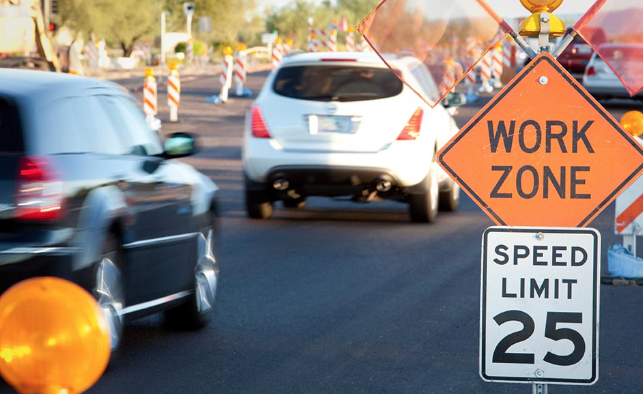
Roadwork can be frustrating, but it is a necessary fact of life for all drivers, whether you drive for a living, commute on a regular basis or run the occasional errand.
Delays and frustrations brought on by traffic jams caused by roadwork can make even the calmest person impatient. And that can be dangerous in a work zone: In 2014, auto accidents in work zones resulted in 669 fatalities and about 30,500 injuries.1
Driving in work zones does not have to be a stressful experience, though. Being mindful of those around you—both workers and other vehicles—can increase the safety of everyone on the road.
If your driving route includes work zones, here are a few things to keep in mind to help promote maximum safety and minimum stress. When entering a work zone:
Be prepared for the unexpected: Situations can change quickly in work zones. Traffic could slow or stop unexpectedly, traffic lanes can merge, or equipment and workers can enter the roadway. Be aware and be prepared.
Slow down: More than one-third of fatal accidents in work zones are caused by speeding.1 Obey the posted speed limit, even if you do not see any work currently in progress.
Obey road crew flaggers and road signs: Flaggers and warning signs are there to help all drivers move safely through the work zone.
Keep a safe following distance: Rear-end collisions account for 30% of work zone accidents.1 Keep a safe distance between you and other cars, construction workers and equipment to help avoid accidents.
Once you are in a work zone, it is important to maintain a safe speed and keep your eyes—and ears—focused on what is going on around you. Specifically: Read More
Share the Road
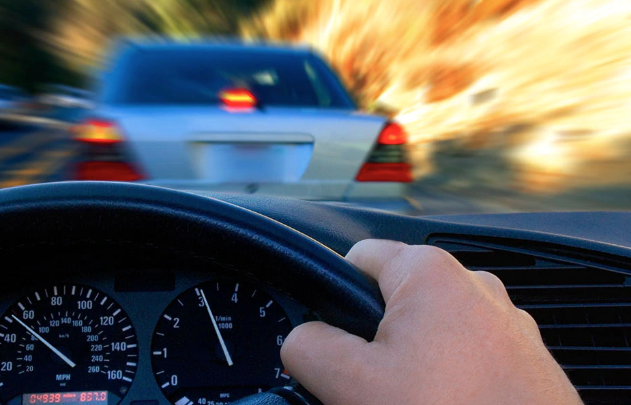
We have all encountered scenarios in which other drivers make us shake our heads. People often are quick to accuse other drivers of being reckless, but if pressed, they may admit to sometimes driving recklessly themselves. If unsafe driving is everyone’s problem, what is the solution?
Our safety professionals have put together three tips that can help make sharing the road safer while getting from point A to B.
Assume You are Invisible
It can be easy to assume everyone else on the road is paying attention, following traffic laws, and can see you clearly. However, that is not always the case. Next time you are expecting another driver to respect your right-of-way or let you merge into another lane, do not assume they are on the same page.
Avoid Competitive Driving
Whenever you are on the road, resist the urge to drive competitively. Instead, go with the flow and drive defensively. See yourself as part of a community of drivers – all trying to get to your destinations safely. Your improved driving behavior may rub off on others and help create safer conditions for everyone on the road.
Control Your Emotions
It may be easy to react to aggressive driving by becoming aggressive yourself. But taking the high road is often the best route. Someone cuts you off? Take a deep breath and just let it roll off your back. Read More










